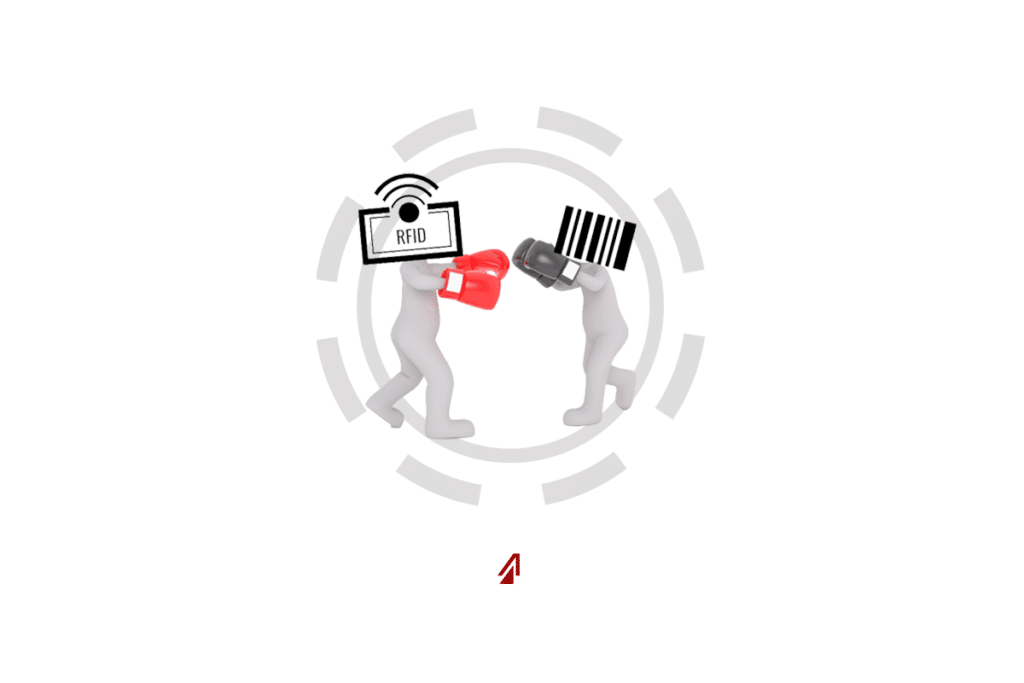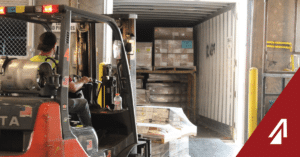In a recent study conducted by Auburn University, researchers found that RFID tracking in retail shipping can produce nearly 100% order accuracy. The study entitled “Project Zipper” was a year-long study, conducted with eight brand owners and five retailers, to compare the accuracy produced by traditional UPC (Universal Product Code) data versus the more technologically advanced RFID (Radio Frequency Identification) data. Research leader and director of the Auburn University RFID Lab, Justin Patton, expressed that the 99.9% result was “much, much higher than expected,” and that the use of RFID can save manufacturers and retailers “billions of dollars.” How does this compare with the traditional UPC codes, and what is stopping more companies from using RFID over traditional UPC?
What is the Difference Between UPC and RFID?
UPC is a global database of product information formatted in a bar code system. The codes are placed on products or containers and are scanned with a laser and read by a computer to log and track information. Originally patented in 1952, and later released as a product label in supermarkets in 1974, UPC has been the essential scanning method for most of the 20th century. The UPC revolutionized the grocery and retail business by tracking the movement of products in and out of stores and by providing statistical data for market research. Today, these codes are placed on nearly every product sold and also on labels used for shipping, storage, or other data tracking applications.
RFID is a radio-frequency technology designed to help in tracking and data collection. It was originally discovered in the 1920s alongside radar, but it was more thoroughly defined and implemented in the 1940s. In the early 2000s, retailers began to consider implementing the tags in their businesses but the trend did not catch on until 2008. Today, the technology is so advanced that shoppers can pinpoint the exact location of products in a store, over the internet, right down to the aisle and shelf location.
Not only used in retail, RFID is a common trend in logistics and warehousing today. Passive tags (trackers without an attached power source) are generally used to label and track products within a storage or retail facility, and active tags (trackers with an attached power source) are often used while loads are in transit. Some manufacturers will tag batches or shipments of products while other tag individual parts and products for greater accuracy.
Traditional Shipping Process
Project Zipper focused on data accuracy of products travelling through the traditional shipping process. In the traditional shipping process, a retailer submits a purchase order, the brand owner (or manufacturer) collects the products to send, they create an ASN (Advanced Ship Notice), the products are shipped and received, and the retailer reconciles the differences between the requested purchase order and received products. Patton and his team analyzed this process and compared the accuracy results of shippers using UPC labels versus those using RFID tracking. They discovered that there is an inherent error in the traditional shipping process. “The supply chain data accuracy processes have been frozen in time for decades, and a lot of the brands and retailers are begging for improvements,” Patton said.
What Were the Research Results
Project Zipper compared the data gathered from UPC and RFID scans at brand owners’ distribution centers to retailers’ distribution centers. Patton and his team found that the typical UPC- labeled product orders only achieved 31% accuracy while the RFID produced 99.9% accuracy. Using UPC, 69% of the loads had at least one error while the researchers only found one single error on one single, total, load using RFID. They found in the traditional process, most of the errors stemmed from picking/packing, shipping, or receiving the wrong products. Project Zipper also noted that when companies tried to develop process “workarounds” they often developed even more severe errors.
“We assumed given the longevity of use and the stability of the UPC/ASN process, that errors would be few,” Says Patton. “On the contrary, using UPC data—currently the primary form of data capture and sharing—almost 70 percent of the orders contained an error somewhere in the process.” Using UPC, product data is not shared automatically. Each label or code needs to be scanned to verify if the right product is in the right place. Traditionally, workers are given a list of products to pick from warehouse shelves and the products are delivered to the pack/ship team. This is where errors commonly occur. This team will perform a QA scan of the UPCs to verify the correct products and correct amount to fulfill orders, but this still may not be enough. More technologically advanced distribution centers provide hand scanners to pickers to automatically check off the items on their list. These scanners will actively verify the products the picker has, but they will not necessarily assist with restocking misplaced items or give an accurate inventory for that item.
The results from Project Zipper led Patton to suggest that companies begin to utilize product-level RFID tracking. Richard Haig, CTO and CIO at Herman Kay, says “Tagging at the source helps retailers and suppliers drive true inventory accuracy and visibility to meet the consumer omni-channel promise.” The study found that not only was the order accuracy nearly perfect, but that using RFID raised retailer distribution center inventory accuracy from nearly 63% to 95%, reduced retail out-of-stock by 50%, and cut cycle count time by 96%. They also suggest that narrowing in on inventory accuracy can save significant amounts of money on reconciliation labor, customer-claims, and returns costs.
Product level RFID tracking can not only give an accurate account of inventory, but can also lead recovery teams directly to the inventory if it is out of place. Basic RFID can track tags anywhere within 50-100ft of a tag, not in a line of sight, and scan multiple tags simultaneously. More advanced active tags, usually battery operated, can track nearly 500 yards. Compared to UPC which requires the scanner to be in close proximity and in clear line of sight.
Why Don’t More Companies Use RFID?
The main reason more companies do not use RFID tags is the up-front cost. Each tag can cost anywhere from $.10 to $50 or more. Sensors and tracking equipment for use inside the warehouse are costly as well. Most companies do not think they can afford to retrofit their facilities to accept the new technology. In addition, tags are physically larger than UPC barcodes and can take up valuable shipping space.
Do the Benefits Outweigh the Costs?
Patton and his team seem to think the ROI on RFID far outweigh the costs. They say that “brand owners can reduce operating costs and improve margins by assuring the right goods are sent where they need to be,” and with the 100% accuracy “We can end claims and chargebacks right now.” The entire supply chain can be leaner as well. Users can more accurately track what products are in their warehouses, can plan stricter replenishment times, eliminate safety-stocks and over-ordering, and expedite returns. Some tags are also reusable, making the cost per use of each tag less every time.
What is Next?
RFID is becoming more advanced all the time. More tags are being released with greater efficiency at a lower cost, and the market is moving towards adopting this technology more fully. However, UPC codes are far from being completely replaced. They present a low up-front cost option with growing technology to support it in new ways. As for Patton and his team at Auburn, Project Zipper was Phase 1 of their study. In Phase 2, expected to release in 2019, the researchers are adding more brands and retailers for the study as well as analyze root causes for known issues in the current transportation system.



